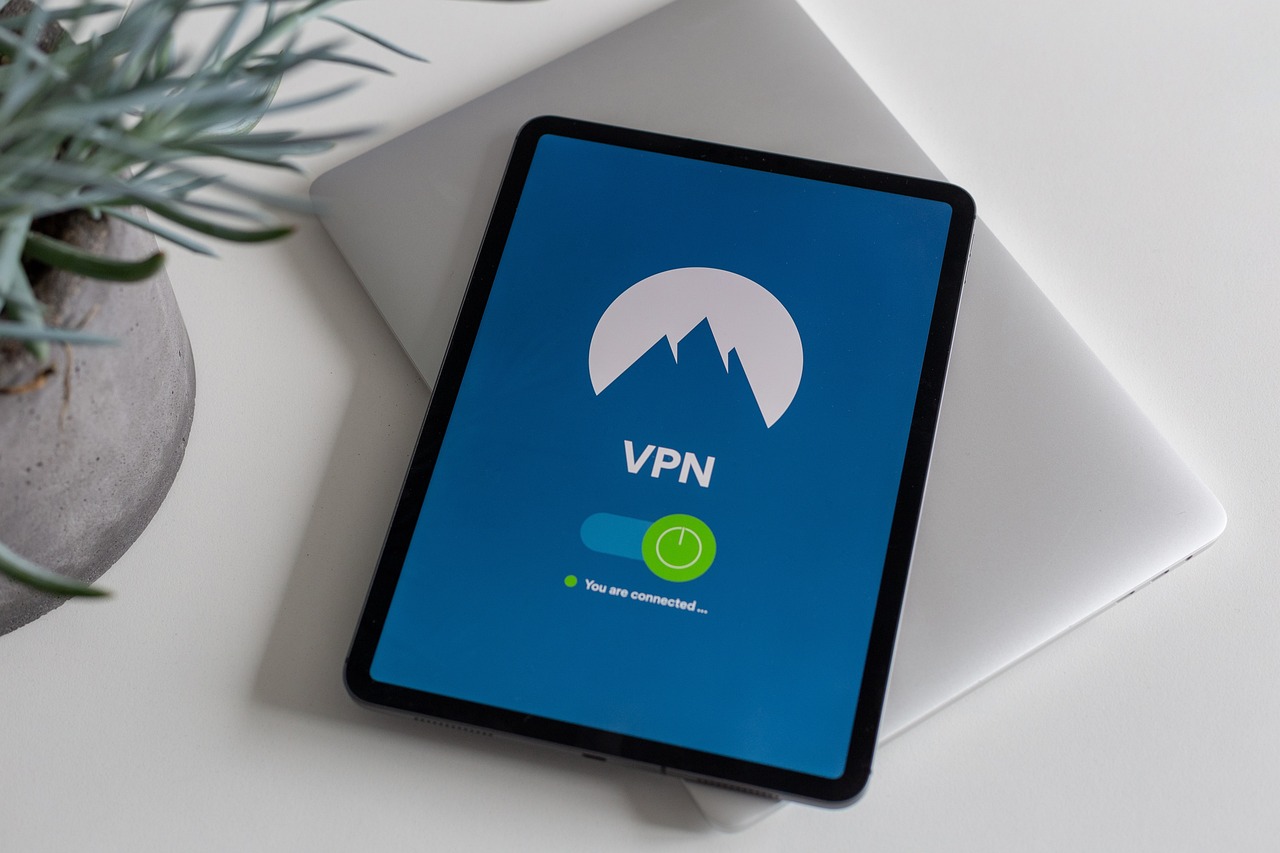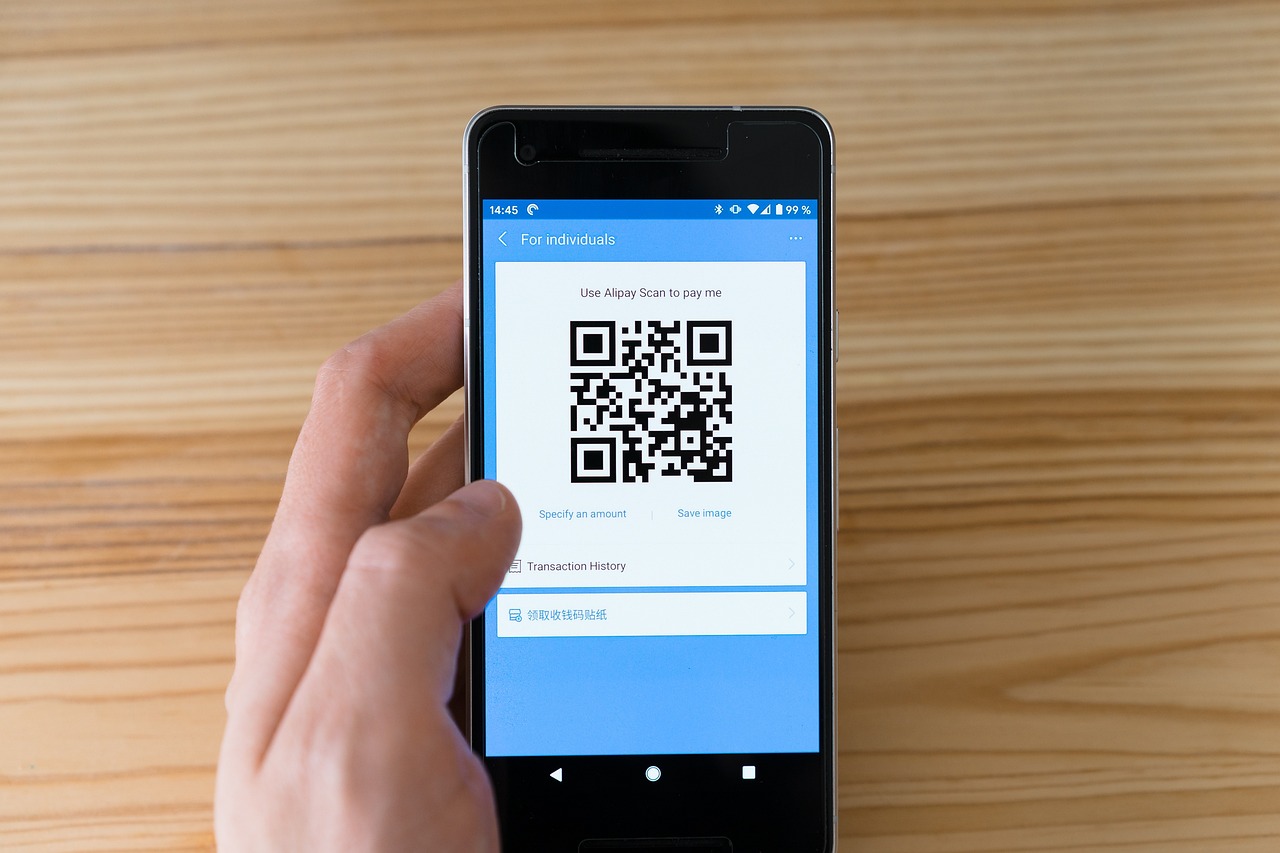Threats to Mobile Devices - Cybersecurity Tips
In today’s hyper-connected world, mobile devices have become an integral part of our daily lives. We use them for everything from communication to banking, and even shopping. However, this convenience comes at a cost. Mobile devices are increasingly becoming prime targets for cybercriminals. The threats are real, and they can lead to severe consequences, including identity theft, financial loss, and unauthorized access to personal information. This article explores the various threats faced by mobile devices and provides essential cybersecurity tips to safeguard your personal information and ensure a secure mobile experience.
Mobile devices face numerous threats, including malware, phishing attacks, and insecure networks. Understanding these threats is the first step in protecting your device and personal data from cybercriminals. Malware can infiltrate your device without you even knowing it, often masquerading as legitimate apps or files. Phishing attacks have evolved to become more sophisticated, targeting unsuspecting users through deceptive messages that appear to come from trusted sources. Furthermore, connecting to insecure networks, such as public Wi-Fi, can expose your device to various risks, making it essential to be aware of these potential dangers.
Mobile malware comes in various forms, such as viruses, trojans, and ransomware. Each type poses unique threats to your device. For instance, viruses can replicate themselves and spread to other devices, while trojans disguise themselves as harmless applications to gain access to your system. Ransomware is particularly notorious; it locks your files and demands payment for their release. Recognizing these types can help users take appropriate measures to avoid infection and maintain device integrity. It's crucial to remain vigilant and educate yourself about the different forms of malware that could potentially compromise your mobile device.
Phishing attacks are increasingly targeting mobile users through deceptive messages and apps. Cybercriminals often use social engineering tactics to trick users into revealing sensitive information, such as passwords or credit card numbers. Awareness of these tactics is crucial for users to protect their sensitive information from being compromised. For example, you might receive a text message that appears to be from your bank, prompting you to click on a link to verify your account. This is a classic phishing attempt that could lead to dire consequences if you fall for it.
Learning how to identify phishing attempts can prevent users from falling victim to scams. Key indicators include suspicious links, unexpected messages, and requests for personal information. Always scrutinize the sender's email address or phone number. If it looks odd or unfamiliar, it’s better to err on the side of caution. Additionally, look out for poor grammar and spelling mistakes, as these are often telltale signs of phishing attempts. By being aware of these red flags, you can better protect yourself from becoming a victim.
Implementing best practices, such as verifying sources and avoiding clicking on unknown links, can significantly reduce the risk of falling for phishing attacks on mobile devices. Always double-check URLs before clicking and consider using a search engine to find the official website instead of clicking on a link. If you receive a suspicious message, contact the organization directly using verified contact information. This extra step can save you from a potential disaster.
Regular software updates are vital for maintaining mobile device security. Updates often include patches for vulnerabilities that could be exploited by cybercriminals, making them essential for protection. By neglecting updates, you leave your device open to attacks that could have been easily prevented. Set your device to automatically update whenever possible, ensuring that you’re always protected with the latest security features and fixes.
Security apps can provide an additional layer of protection for mobile devices. These apps offer features such as malware scanning, secure browsing, and remote wiping capabilities to enhance security. By installing a reputable security app, you can monitor your device for potential threats and take immediate action if any suspicious activity is detected. Remember, however, that not all security apps are created equal. Choose wisely and do your research before committing to any particular app.
Selecting the right security app involves considering factors such as user reviews, features, and compatibility with your device. A well-chosen app can greatly improve your mobile security posture. Look for apps that have a proven track record in the industry and offer comprehensive protection against various threats. Additionally, consider apps that provide real-time protection and regular updates to keep pace with evolving threats.
Most mobile devices come with built-in security features. Properly setting up these features, such as biometric authentication and encryption, is crucial for safeguarding personal data against unauthorized access. Enable features like fingerprint recognition or facial recognition to add an extra layer of security. Encryption can protect your data even if your device is lost or stolen, ensuring that your information remains private and secure.
- What is the most common threat to mobile devices? The most common threats include malware, phishing attacks, and insecure networks.
- How can I tell if my device is infected with malware? Signs of infection can include unusual behavior, such as slow performance, unexpected ads, or apps you didn’t install.
- Are free security apps effective? While some free security apps offer basic protection, they may lack comprehensive features found in paid versions. Always read reviews and choose wisely.
- How often should I update my mobile device? It’s best to enable automatic updates and check for updates regularly to ensure your device is always secure.

Understanding Mobile Threats
In today's digital age, mobile devices have become an integral part of our daily lives. From checking emails to online banking, our smartphones and tablets hold a treasure trove of personal information. However, this convenience comes with its own set of challenges. Mobile devices face numerous threats that can compromise our privacy and security. Understanding these threats is the first step in protecting your device and personal data from cybercriminals.
One of the most prevalent threats is malware, which refers to malicious software designed to harm or exploit any programmable device. Malware can infiltrate your device through various means, such as downloading apps from untrusted sources or clicking on suspicious links. Once installed, malware can steal sensitive data, track your movements, or even lock you out of your device entirely.
Another significant threat is phishing attacks. These attacks are becoming increasingly sophisticated, often masquerading as legitimate messages from trusted sources. Cybercriminals use deceptive emails, texts, or even phone calls to trick users into providing personal information, such as passwords or credit card numbers. The rise of mobile phishing has made it essential for users to remain vigilant and recognize the signs of these scams.
In addition to malware and phishing, insecure networks pose a considerable risk. Public Wi-Fi networks, while convenient, can be a hacker's playground. When you connect to an unsecured network, your data can be intercepted by malicious actors. This means that any sensitive information you transmit, such as passwords or financial details, could be at risk. Therefore, it is crucial to understand the implications of using public Wi-Fi and take necessary precautions.
To further illustrate the various threats to mobile devices, consider the following table:
| Threat Type | Description | Prevention Tips |
|---|---|---|
| Malware | Malicious software that can steal data or harm your device. | Only download apps from official stores; keep your device updated. |
| Phishing | Deceptive messages designed to trick users into revealing personal information. | Verify sender information; avoid clicking on suspicious links. |
| Insecure Networks | Public Wi-Fi networks that can expose your data to hackers. | Use a VPN; avoid accessing sensitive information on public networks. |
By recognizing these threats, you can take proactive steps to protect your mobile device. Awareness is your first line of defense. Remember, the more you know about the risks, the better equipped you will be to safeguard your personal information. So, keep your eyes peeled for suspicious activities and stay informed about the latest security trends.

Common Types of Mobile Malware
When it comes to mobile devices, the threat of malware is more prevalent than ever. Just like a thief lurking in the shadows, malware can sneak onto your device without you even knowing it. Understanding the various types of mobile malware is crucial for safeguarding your personal information and ensuring a secure experience. Let's dive into some of the most common types of mobile malware that you might encounter.
First up, we have viruses. Mobile viruses are akin to the common cold; they spread easily and can wreak havoc on your device. They often attach themselves to legitimate applications or files, and once activated, they can corrupt data, slow down your device, or even render it unusable. Imagine waking up one day to find that your phone is performing like a sluggish old computer—frustrating, right?
Next, we have trojans. Named after the famous Greek myth, trojans disguise themselves as harmless applications to trick users into downloading them. Once installed, they can create backdoors for cybercriminals, allowing them to access sensitive information such as passwords and credit card details. Think of a trojan as a wolf in sheep's clothing—appearing friendly but hiding malicious intentions.
Then there’s ransomware, a particularly nasty type of malware that can lock you out of your device or encrypt your files until you pay a ransom. Imagine finding your cherished photos and important documents locked away, with a message demanding payment to regain access. This type of malware can be devastating, both emotionally and financially.
Additionally, we can’t forget about adware. While not as harmful as other types of malware, adware bombards users with unwanted advertisements, consuming data and draining battery life. It’s like having a pesky fly buzzing around your head—annoying but not necessarily dangerous. However, adware can also track your browsing habits, leading to privacy concerns.
Lastly, spyware operates silently in the background, collecting data about your activities without your consent. This can include everything from your location to your browsing history. Spyware is like a sneaky spy, gathering intel while you think you’re safe. It can be used for various malicious purposes, from identity theft to targeted advertising.
To summarize, here’s a quick overview of the common types of mobile malware:
| Type of Malware | Description |
|---|---|
| Viruses | Spread easily, corrupt data, and slow down devices. |
| Trojans | Disguise as harmless apps; create backdoors for hackers. |
| Ransomware | Locks users out of their devices or encrypts files for ransom. |
| Adware | Displays unwanted ads and can track browsing habits. |
| Spyware | Collects data about user activities without consent. |
Being aware of these common types of mobile malware can significantly enhance your ability to protect your device. Just like you wouldn’t leave your front door wide open, don’t leave your mobile device vulnerable to these threats. Stay informed, be cautious, and take proactive measures to keep your personal information safe.
Q: What should I do if I suspect my mobile device has malware?
A: If you suspect malware, immediately run a security scan using a trusted security app and consider resetting your device to factory settings.
Q: How can I prevent malware infections on my mobile device?
A: To prevent infections, only download apps from reputable sources, avoid clicking on suspicious links, and keep your software updated.
Q: Is it safe to use public Wi-Fi on my mobile device?
A: Public Wi-Fi can be risky; consider using a VPN to encrypt your data and protect your connection.

Phishing Attacks on Mobile Devices
In the digital age, where our smartphones serve as gateways to our personal lives, phishing attacks have evolved into a menacing threat specifically targeting mobile users. Imagine this: you're scrolling through your messages when suddenly, a notification pops up claiming to be from your bank, urging you to verify your account details. It looks legitimate, right? But hold on! This is a classic example of a phishing attempt designed to trick you into revealing sensitive information. These attacks have become increasingly sophisticated, often masquerading as trusted entities to gain your confidence.
Phishing attacks on mobile devices can occur in various forms, including deceptive emails, text messages (SMS), and even through social media platforms. Cybercriminals leverage these channels to reach unsuspecting victims, often using urgency and fear tactics to prompt immediate action. For instance, a fake message might state that your account will be suspended unless you click on a link and provide your login credentials. This kind of manipulation preys on our instinct to respond quickly, making it crucial to approach such messages with skepticism.
To better understand the tactics employed by these fraudsters, let’s explore some common characteristics of phishing attempts:
- Suspicious Links: Often, the URLs in phishing messages will look similar to legitimate ones but may contain slight variations, such as misspellings or extra characters.
- Unexpected Messages: If you receive a message from a company you don’t usually interact with, be cautious. Legitimate organizations typically do not ask for sensitive information via text or email.
- Requests for Personal Information: Be wary of any message that requests sensitive data like passwords, Social Security numbers, or credit card information.
Recognizing these signs can help you stay one step ahead of cybercriminals. But what can you do to protect yourself from falling victim to these phishing scams? The first step is to maintain a healthy dose of skepticism. Always verify the source of any communication before clicking on links or providing any personal information. If something feels off, it probably is!
Moreover, consider using security apps that can help identify and block phishing attempts. These apps often come equipped with features that scan links for potential threats, adding an extra layer of defense to your mobile experience. Remember, the best defense against phishing is awareness and vigilance. By staying informed about the tactics used by cybercriminals and adopting best practices, you can significantly reduce your risk of falling prey to these deceptive attacks.

Identifying Phishing Attempts
In today's digital age, where our mobile devices are practically an extension of ourselves, falling victim to phishing attempts can feel like a nightmare. But fear not! By honing your ability to identify these deceitful tactics, you can effectively shield your personal information from cybercriminals. So, how do you spot a phishing attempt? Well, it often starts with a gut feeling. If something seems off, it probably is! Here are some key indicators to watch for:
- Suspicious Links: Phishing messages often contain links that look legitimate at first glance. However, hovering over them might reveal a different story. Always check the URL before clicking. If it’s a jumbled mess or doesn’t match the official website, steer clear!
- Unexpected Messages: If you receive a message from a bank or service you don’t use, be cautious. Phishers often impersonate trusted entities to trick you into providing sensitive information.
- Requests for Personal Information: Legitimate companies rarely ask for sensitive information via email or text. If you’re asked to provide details like your password or social security number, it’s a red flag!
Additionally, be cautious of urgent language that creates a sense of panic. Phishing attempts often use phrases like "Your account will be suspended!" or "Immediate action required!" to pressure you into acting quickly without thinking. It’s akin to a magician’s trick—distracting you with flashy words while they pull the wool over your eyes.
Another common tactic is the use of generic greetings. If an email starts with "Dear Customer" instead of your name, it’s a sign that it may not be from a legitimate source. Phishers often cast a wide net, hoping to catch unsuspecting victims.
Lastly, remember that awareness is your best defense. Regularly educating yourself about the latest phishing tactics can help you stay one step ahead of cybercriminals. By being vigilant and questioning the authenticity of messages, you can significantly reduce your risk of falling victim to these scams. After all, your personal information is priceless, and protecting it should be your top priority!
Q1: What should I do if I suspect a phishing attempt?
A1: If you suspect a phishing attempt, do not click any links or provide any information. Report the message to your email provider or the company being impersonated.
Q2: Can phishing attempts happen via phone calls?
A2: Yes, phishing can occur through phone calls, known as vishing. Be cautious of callers asking for personal information or urging immediate action.
Q3: Are there any tools to help identify phishing attempts?
A3: Yes, many security apps offer features that can help identify phishing attempts. Additionally, web browsers often have built-in protection against known phishing sites.

Best Practices to Avoid Phishing
In today's digital age, where our mobile devices are practically extensions of ourselves, staying safe from phishing attacks is more crucial than ever. Phishing scams are designed to trick you into revealing sensitive information, such as passwords or credit card numbers, often through seemingly innocuous messages or links. So, how can you shield yourself from these cyber traps? Here are some best practices to keep in mind.
First and foremost, always verify the source of any message you receive. If you get an email or text from your bank asking for your account details, take a moment to think: Did I expect this? It’s wise to navigate to your bank's website directly instead of clicking on any provided links. This simple act can save you from falling into a phishing trap. Remember, legitimate organizations will never ask for sensitive information via email or text.
Another critical practice is to avoid clicking on unknown links. If a message looks suspicious, don’t engage with it. Even if it appears to come from a friend, it might be a compromised account. Instead, you can reach out to your friend through another communication method to verify whether they indeed sent you the message. This extra step can help you avoid a nasty surprise.
Additionally, consider using a password manager. These tools not only help you create strong, unique passwords for each of your accounts but also assist in recognizing legitimate sites. When you use a password manager, you can be more confident that you're entering your credentials only on trusted sites. This reduces the chances of falling for phishing scams that mimic login pages.
Lastly, stay informed. Cybercriminals are always evolving their tactics, and being aware of the latest phishing schemes can give you an edge. Subscribe to cybersecurity newsletters or follow reputable tech blogs that discuss current threats. Knowledge is power, and the more you know, the better you can protect yourself.
By implementing these best practices, you can significantly reduce your risk of falling victim to phishing attempts. Remember, it’s all about staying vigilant and being proactive in your mobile security strategy.
- What should I do if I think I've fallen for a phishing scam? If you believe you've been a victim, immediately change your passwords and contact your bank or relevant institutions.
- How can I recognize a phishing email? Look for poor grammar, generic greetings, and suspicious links. Always double-check the sender's email address.
- Are there specific apps that can help prevent phishing? Yes, many security apps offer features to detect and warn about phishing attempts. Look for reputable ones with good reviews.

Importance of Regular Software Updates
In the fast-paced world of technology, where new threats emerge almost daily, the cannot be overstated. Think of your mobile device as a fortress. Each software update acts like a fresh layer of paint, reinforcing the walls and sealing any cracks that may have appeared. Without these updates, your fortress remains vulnerable, leaving room for cybercriminals to exploit weaknesses and gain unauthorized access to your personal information.
Software updates are designed to address various issues, including security vulnerabilities, performance enhancements, and new features. When developers identify a flaw in their software, they work tirelessly to create a patch that fixes the issue. This is why regularly updating your mobile device is akin to keeping your fortress well-maintained. It ensures that you are always one step ahead of potential threats.
Moreover, many users underestimate the risks associated with outdated software. For instance, a study conducted by cybersecurity experts revealed that over 60% of mobile malware attacks target outdated operating systems. This statistic highlights the critical need for users to stay vigilant and prioritize updates. By ignoring these updates, you are essentially leaving the door wide open for hackers and other malicious actors.
Here are some key reasons why you should prioritize regular software updates:
- Protection Against Vulnerabilities: Updates often include patches for known security vulnerabilities that hackers could exploit.
- Enhanced Features: Software updates may introduce new features that improve usability and functionality.
- Performance Improvements: Updates can optimize your device's performance, making it run smoother and faster.
- Bug Fixes: Regular updates help resolve bugs and glitches that may hinder your device's performance.
In conclusion, regular software updates are not just a suggestion; they are a necessity for anyone who values their security and privacy. By keeping your mobile device updated, you are actively participating in your own defense against cyber threats. So, the next time you receive a notification prompting you to update your software, remember that it's not just an inconvenience—it's a critical step in safeguarding your digital life.
Q1: How often should I update my mobile device?
A1: It's recommended to check for updates at least once a month, or whenever you receive a notification from your device.
Q2: What happens if I ignore software updates?
A2: Ignoring updates can leave your device vulnerable to security threats, as outdated software may contain unpatched vulnerabilities.
Q3: Can I set my device to update automatically?
A3: Yes, most mobile devices have an option for automatic updates. Enabling this feature can help ensure you're always protected.
Q4: Are software updates free?
A4: Yes, software updates for mobile operating systems are typically free of charge.

Utilizing Security Apps
In today's digital age, where our mobile devices hold a treasure trove of personal information, utilizing security apps is not just a smart choice—it's a necessity. Imagine your phone as a vault, and just like any vault, it needs robust security measures to keep the treasures inside safe from prying eyes. Security apps act as that extra layer of protection, helping to guard against the myriad of threats that lurk in the digital world. These applications come equipped with various features designed to enhance your mobile security, making them invaluable tools for anyone who values their privacy and data integrity.
One of the primary functions of security apps is malware scanning. Just as you wouldn't leave your front door unlocked, you shouldn't leave your device vulnerable to malware. These apps continuously scan your device for any malicious software that may have slipped through the cracks. They can detect and remove viruses, trojans, and other harmful entities before they wreak havoc on your device. Additionally, many security apps offer secure browsing capabilities, ensuring that your online activities remain private and protected from potential threats. This means you can surf the web, shop online, or check your emails without constantly looking over your shoulder.
Another essential feature of security apps is the ability to perform remote wiping. Picture this: you accidentally misplace your phone, and your heart races as you think of all the sensitive data it contains. With a security app, you can remotely wipe all your data, ensuring that even if your device falls into the wrong hands, your personal information stays secure. This feature is particularly useful for those who frequently travel or work in public spaces where the risk of theft is higher.
However, not all security apps are created equal. When choosing the right app for your needs, consider factors such as user reviews, available features, and compatibility with your device. A quick glance at user feedback can provide valuable insights into an app's effectiveness. Additionally, look for apps that offer a comprehensive range of features, including real-time protection, anti-phishing tools, and even VPN services for secure browsing.
To help you navigate this landscape, here’s a quick comparison of some popular security apps:
| App Name | Key Features | User Rating |
|---|---|---|
| McAfee Mobile Security | Malware protection, anti-theft, secure browsing | 4.5/5 |
| Norton Mobile Security | Malware protection, web protection, VPN | 4.6/5 |
| Bitdefender Mobile Security | Malware scanning, anti-theft, account privacy | 4.7/5 |
Setting up these security apps is just as crucial as choosing the right one. Most apps provide a straightforward setup process, often guiding you through the necessary steps to ensure maximum protection. Don’t skip the setup of essential features like biometric authentication or encryption—these are your first lines of defense against unauthorized access. By taking the time to properly configure these settings, you empower your mobile device to defend itself against potential threats effectively.
In conclusion, utilizing security apps is not merely an option; it’s a vital part of maintaining a secure mobile experience. With the right app, you can rest easy knowing that your personal data is protected, allowing you to enjoy the convenience of mobile technology without the constant fear of cyber threats. So, take that step today—arm your device with a security app and turn your mobile experience into a fortress of safety!
Q: Do I really need a security app on my mobile device?
A: Yes! With the increasing number of cyber threats targeting mobile devices, a security app is essential for protecting your personal information and ensuring a secure browsing experience.
Q: How do I choose the right security app?
A: Look for user reviews, compare features, and check compatibility with your device. Ensure the app offers comprehensive protection, including malware scanning and secure browsing.
Q: Can security apps slow down my device?
A: While some security apps may use system resources, most reputable apps are designed to operate efficiently without significantly impacting your device's performance.
Q: Is it enough to just install a security app?
A: While a security app is a crucial part of your mobile security strategy, it’s also important to practice safe browsing habits and keep your device's software up to date for optimal protection.

Choosing the Right Security App
This article explores the various threats faced by mobile devices and provides essential cybersecurity tips to safeguard your personal information and ensure a secure mobile experience.
Mobile devices face numerous threats, including malware, phishing attacks, and insecure networks. Understanding these threats is the first step in protecting your device and personal data from cybercriminals.
Mobile malware comes in various forms, such as viruses, trojans, and ransomware. Recognizing these types can help users take appropriate measures to avoid infection and maintain device integrity.
Phishing attacks are increasingly targeting mobile users through deceptive messages and apps. Awareness of these tactics is crucial for users to protect their sensitive information from being compromised.
Learning how to identify phishing attempts can prevent users from falling victim to scams. Key indicators include suspicious links, unexpected messages, and requests for personal information.
Implementing best practices, such as verifying sources and avoiding clicking on unknown links, can significantly reduce the risk of falling for phishing attacks on mobile devices.
Regular software updates are vital for maintaining mobile device security. Updates often include patches for vulnerabilities that could be exploited by cybercriminals, making them essential for protection.
Security apps can provide an additional layer of protection for mobile devices. These apps offer features such as malware scanning, secure browsing, and remote wiping capabilities to enhance security.
When it comes to , you want to ensure that your selection is not just a shot in the dark. A good security app acts like a trusty shield, protecting you from the ever-evolving threats lurking online. Start by considering user reviews; they can be a treasure trove of information. Look for apps that have consistently high ratings and positive feedback from users, as these often indicate reliability and effectiveness.
Next, think about the features you need. Not all security apps are created equal, and some may offer more comprehensive protection than others. For instance, you might want an app that includes:
- Malware scanning: To detect and remove harmful software.
- Secure browsing: To protect you while surfing the web.
- Remote wiping: To erase your data if your device is lost or stolen.
Compatibility with your device is also crucial. An app that works seamlessly with your operating system will provide a smoother experience and better protection. Before making a decision, check whether the app supports your specific device model and operating system version.
Finally, don’t overlook the importance of updates. A security app that frequently updates its features and virus definitions is more likely to keep you safe from the latest threats. So, take your time, do your research, and choose wisely. Your mobile security is worth it!
- What is mobile malware? Mobile malware refers to malicious software designed to target mobile devices, including viruses, trojans, and ransomware.
- How can I tell if my device is infected? Symptoms of infection may include unusual behavior, such as slow performance, unexpected pop-ups, or unfamiliar apps appearing on your device.
- Are free security apps effective? While some free security apps can provide basic protection, they may lack the features and support of paid options. It's essential to evaluate their effectiveness based on reviews and features.
- How often should I update my security app? Regular updates are crucial for maintaining security; ideally, check for updates weekly or enable automatic updates if available.

Setting Up Security Features
When it comes to protecting your mobile device, setting up security features is like putting on a suit of armor before heading into battle. It’s your first line of defense against the lurking threats that can jeopardize your personal information. Most modern smartphones come equipped with a variety of built-in security features, but many users overlook them or fail to configure them properly. This oversight can leave their devices vulnerable to attacks. So, how do you ensure that your device is as secure as possible?
First and foremost, biometric authentication is a game changer. This feature typically includes fingerprint scanning or facial recognition, allowing only you to unlock your device. It’s not just convenient; it’s also significantly more secure than a simple PIN or password. Imagine trying to remember a complex password while someone is trying to peek over your shoulder. With biometrics, you can sidestep that stress and keep your data safe.
Next, let’s talk about encryption. Many smartphones offer the option to encrypt your data, which means even if someone gains access to your device, they won’t be able to read your files without the correct password. Think of encryption as a secret code that only you and your device understand. To enable this feature, navigate to your device's security settings and look for the encryption option. It might take a little time to set up, but the peace of mind it offers is priceless.
Another critical feature is the Find My Device functionality. This tool not only helps you locate your phone if it’s lost but can also remotely wipe your data if you fear it has fallen into the wrong hands. It’s like having a backup plan for your backup plan! To set this up, you usually need to enable location services and link your device to your Google or Apple account. This way, you can track your device from another device or even a computer.
Lastly, don’t forget about app permissions. When you download an app, it often requests access to various features of your phone, like your camera, contacts, or location. Always read these permissions carefully. If an app requests access to information that seems unnecessary for its function, think twice before granting it. It’s like letting a stranger into your house; you wouldn’t do that without knowing who they are, right?
In summary, setting up security features on your mobile device is crucial for safeguarding your personal information. By enabling biometric authentication, encryption, Find My Device, and being cautious with app permissions, you can significantly enhance your mobile security. Remember, your device is a treasure trove of personal data, and protecting it should be your top priority!
- What is biometric authentication? - It is a security feature that uses your unique biological traits, such as fingerprints or facial recognition, to unlock your device.
- Why is encryption important? - Encryption protects your data by making it unreadable to anyone who does not have the correct password, adding an extra layer of security.
- How can I find my lost device? - Enable the Find My Device feature in your settings to track and locate your phone if it goes missing.
- What should I do if an app requests unnecessary permissions? - Be cautious and consider uninstalling the app if it requests access to information that seems irrelevant to its functionality.
Frequently Asked Questions
- What are the most common threats to mobile devices?
Mobile devices face a variety of threats, including malware, which can infect your device and compromise your data, and phishing attacks, where cybercriminals trick you into revealing sensitive information. Additionally, using insecure networks can expose your device to potential attacks.
- How can I identify phishing attempts on my mobile device?
Identifying phishing attempts is crucial for your safety. Look out for suspicious links in messages, unexpected requests for personal information, and emails from unknown sources. If something seems off, trust your instincts and verify the source before clicking on anything.
- Why are regular software updates important for mobile security?
Regular software updates are essential because they often include security patches that fix vulnerabilities. Cybercriminals constantly look for these weaknesses to exploit, so keeping your device updated helps protect you from potential threats.
- What features should I look for in a mobile security app?
When choosing a mobile security app, consider features like malware scanning, secure browsing, and the ability to remotely wipe your device if it's lost or stolen. User reviews and compatibility with your device are also important factors to ensure you select the right app.
- How can I set up built-in security features on my mobile device?
Most mobile devices come with built-in security features like biometric authentication and encryption. To set these up, go to your device settings and follow the prompts to enable these features. Properly configuring them is key to keeping your personal data safe from unauthorized access.



















